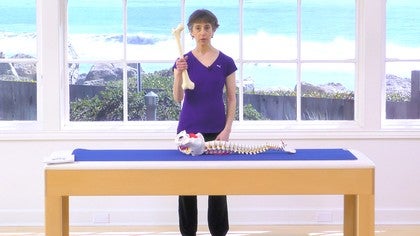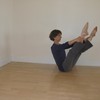The Psoas
Ruth Alpert
Tutorial 2170
Watch this Tutorial


Tinkerbell
1 person
likes this.
excellent thank you
10 years ago
Thank you Debra Holland! Contact me if you like, perhaps we can do a skype thing (or something) for more repertoire.
9 years ago
At 13.50 Ruth mentions that a contracted psoas is going to pull the pelvis forward, but what I see her show with her body is an posterior pelvic tilt, rather than an anterior pelvic tilt. So, what I see is hip extension, rather than hip flexion - which is the action of the psoas. Hence, I am confused... I always thought that the psoas contributes to an anterior pelvic tilt?
9 years ago
Hi Jacqueline, yes, the technical term would be posterior pelvic tilt. I used the word forward because I was simplifying my language to apply to anyone watching it, even if they didn't have the technicality. Another way I could have said it, is that when the psoas is contracted in supine, it brings the pelvis into a "tucked" position. Actually, a tight psoas can bring the pelvis into anterior and posterior tilts: scroll down to "hip joint extensor" in this article http://www.somatics.de/artikel/for- professionals/2-article/118-lecture -notes-on-psoas-adductors
9 years ago
thanks for the great tutorial.
i do have a question, while resting my legs, i find that in parallel i am still holding a lot of tension in my hips. it is only able to completely relax in external rotation. will we still be able to release the psoas as such?
i do have a question, while resting my legs, i find that in parallel i am still holding a lot of tension in my hips. it is only able to completely relax in external rotation. will we still be able to release the psoas as such?
9 years ago
41-50 of 83
You need to be a subscriber to post a comment.
Please Log In or Create an Account to start your free trial.








































